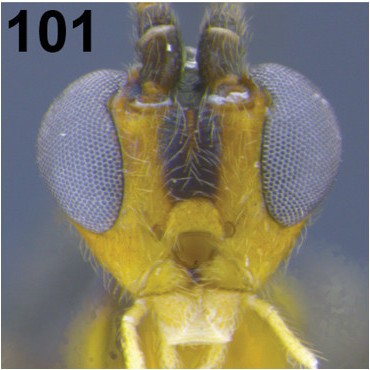|
Seneciobraconinae
''Seneciobracon'' is an extinct genus of parasitic wasps found in Burmese amber Burmese amber, also known as Burmite or Kachin amber, is amber from the Hukawng Valley in northern Myanmar. The amber is dated to around 100 million years ago, during the latest Albian to earliest Cenomanian ages of the mid-Cretaceous period. Th ... containing the single species ''Seneciobracon novalatus''. It was formerly placed under the monotypic subfamily Seneciobraconinae, but was moved to Protorhyssalinae in 2021. References Parasitic wasps Braconidae Braconidae genera Monotypic Hymenoptera genera {{wasp-stub ... [...More Info...] [...Related Items...] OR: [Wikipedia] [Google] [Baidu] |
Braconidae
The Braconidae are a family of parasitoid wasps. After the closely related Ichneumonidae, braconids make up the second-largest family in the order Hymenoptera, with about 17,000 recognized species and many thousands more undescribed. One analysis estimated a total between 30,000 and 50,000, and another provided a narrower estimate between 42,000 and 43,000 species. Classification The Braconidae are currently divided into about 47 subfamilies and over 1000 genera, which include ''Aerophilus'', ''Aleiodes'', ''Apanteles'', ''Asobara'', ''Bracon (wasp), Bracon'', ''Cenocoelius'', ''Chaenusa'', ''Chorebus'', ''Cotesia'', ''Dacnusa'', ''Diachasma'', ''Dimeris'', ''Microgaster'', ''Opius'', ''Parapanteles'', ''Phaenocarpa'', ''Spathius'', and ''Syntretus.'' These fall into two major groups, informally called the cyclostomes and noncyclostomes. In cyclostome braconids, the Labrum (arthropod mouthpart), labrum and the lower part of the Clypeus (arthropod anatomy), clypeus are concave ... [...More Info...] [...Related Items...] OR: [Wikipedia] [Google] [Baidu] |
Parasitic Wasps
Parasitoid wasps are a large group of hymenopteran superfamilies, with all but the wood wasps ( Orussoidea) being in the wasp-waisted Apocrita. As parasitoids, they lay their eggs on or in the bodies of other arthropods, sooner or later causing the death of these hosts. Different species specialise in hosts from different insect orders, most often Lepidoptera, though some select beetles, flies, or bugs; the spider wasps ( Pompilidae) exclusively attack spiders. Parasitoid wasp species differ in which host life-stage they attack: eggs, larvae, pupae, or adults. They mainly follow one of two major strategies within parasitism: either they are endoparasitic, developing inside the host, and koinobiont, allowing the host to continue to feed, develop, and moult; or they are ectoparasitic, developing outside the host, and idiobiont, paralysing the host immediately. Some endoparasitic wasps of the superfamily Ichneumonoidea have a mutualistic relationship with polydnaviruses, ... [...More Info...] [...Related Items...] OR: [Wikipedia] [Google] [Baidu] |
Burmese Amber
Burmese amber, also known as Burmite or Kachin amber, is amber from the Hukawng Valley in northern Myanmar. The amber is dated to around 100 million years ago, during the latest Albian to earliest Cenomanian ages of the mid-Cretaceous period. The amber is of significant palaeontological interest due to the diversity of flora and fauna contained as inclusions, particularly arthropods including insects and arachnids but also birds, lizards, snakes, frogs and fragmentary dinosaur remains. The amber has been known and commercially exploited since the first century AD, and has been known to science since the mid-nineteenth century. Research on the deposit has attracted controversy due to the potential role of the amber trade in funding internal conflict in Myanmar and hazardous working conditions in the mines where it is collected. Geological context, depositional environment and age The amber is found in the Hukawng Basin, a large Cretaceous-Cenozoic sedimentary basin within north ... [...More Info...] [...Related Items...] OR: [Wikipedia] [Google] [Baidu] |
Parasitic Wasps
Parasitoid wasps are a large group of hymenopteran superfamilies, with all but the wood wasps ( Orussoidea) being in the wasp-waisted Apocrita. As parasitoids, they lay their eggs on or in the bodies of other arthropods, sooner or later causing the death of these hosts. Different species specialise in hosts from different insect orders, most often Lepidoptera, though some select beetles, flies, or bugs; the spider wasps ( Pompilidae) exclusively attack spiders. Parasitoid wasp species differ in which host life-stage they attack: eggs, larvae, pupae, or adults. They mainly follow one of two major strategies within parasitism: either they are endoparasitic, developing inside the host, and koinobiont, allowing the host to continue to feed, develop, and moult; or they are ectoparasitic, developing outside the host, and idiobiont, paralysing the host immediately. Some endoparasitic wasps of the superfamily Ichneumonoidea have a mutualistic relationship with polydnaviruses, ... [...More Info...] [...Related Items...] OR: [Wikipedia] [Google] [Baidu] |


